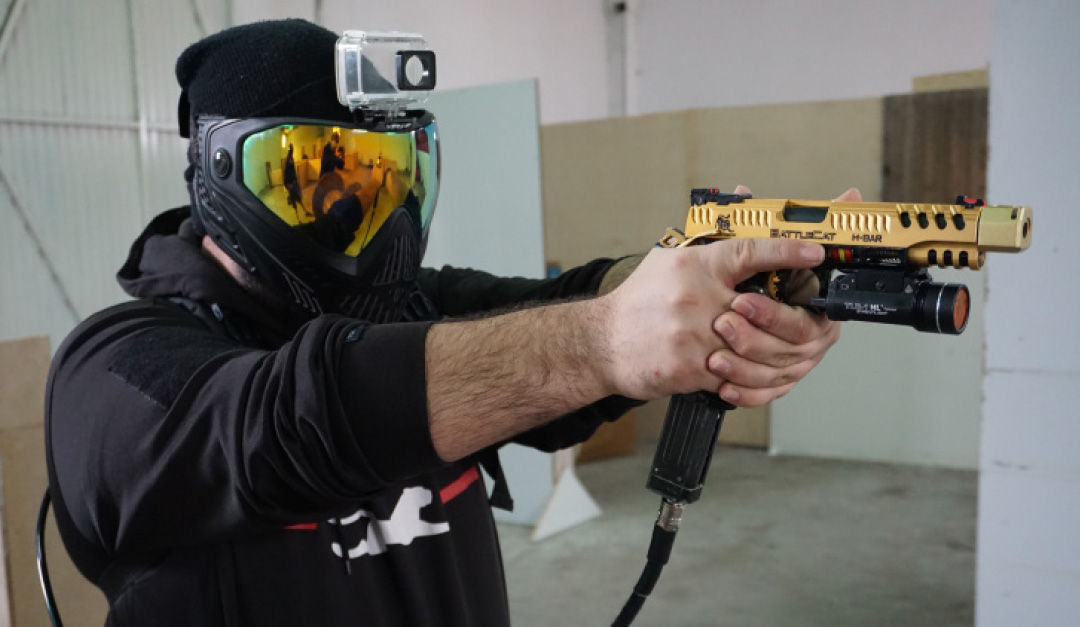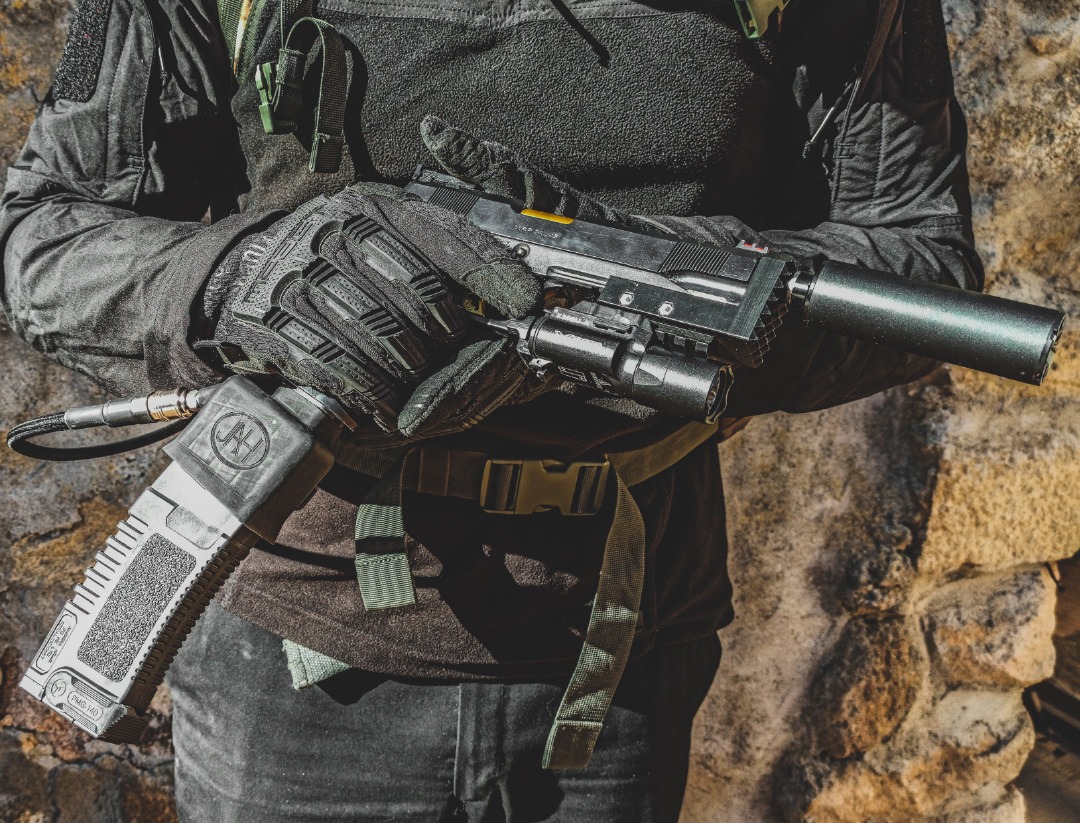

"Run!! He’s got an HPA!!” This could be the opening sentence of a horror movie, but unfortunately it is not as much fiction as we would like it to be, and we hear it too much in the fields or social networks. Well, gentlemen, the HPA does not bite. It is neither better nor worse, it has its pros and cons when faced with other systems, of course. And today we have come to shed some light on the subject so that at least the next time you talk about it, you will be informed. I hope you enjoy it.

What is it?
HPA stands for "High Pressure Air". And it is a feeding system that, according to the replica we use, we can say that it is the substitute for batteries, gas or CO2.

How does it work?
Basically, it is a cylinder with a solenoid inside (the part that opens and closes the system that lets the air through) which, through the electronics that regulate practically everything, from the BBs per second, to the delay you want to have in each shot, how much of the nozzle should enter the chamber, how fast you want it to enter the chamber, the volume of air you want to use, the air velocity etc.
The FCU (something like the on-board computer) and the micro switch basically come into play here. If we talk about specifics, we would mention two of the most well-known and recognized systems by the players due to the benefits they offer.





What do I need to make it work?
This will depend on the replica to which we are going to place it in, but as a general rule you will need:
1. A special tank, for air storage.
2. A regulator, which will be responsible for regulating the pressure of the outlet and where you can modify the amount of PSI of the tank (this is linked to the FPS).
3. A line, or more commonly known as a hose, that connects the regulator to the replica.

What do I do to install it?
At this point we must clarify the type of replica in which it will be used. If it's a...
GBB guns
For me, the easiest way to convert to HPA, is to change the gas inlet/CO2 valve of our secondary magazine to a specific one for HPA that will be connected to the regulator through the line.



 |



Snipers
Another more common example, it can be compared with the famous Mancraft CO2 kit, instead of placing CO2 tanks you would use the air in the tank. In this case, the cylinder set with the spring will be replaced by the HPA cylinder.


My f*cking opinion:
Many people believe that HPA implies that the replica will suffer a lot internally and that it will shoot harder and further. Nothing is further from reality. From my point of view (backed by several years of experience) gas replicas break by the different fluctuations that gas undergoes at medium/high temperatures. In other words, in the morning 14 kg gas of pressure will give us about 320 fps at 25 ºC and as the morning progresses and the temperature rises, this 14 kg gas begins to provide more FPS, say 335, and this difference causes the replica to suffer excessively and may end up breaking.
Well, with HPA this will not happen. It can be regulated at a certain power and does vary throughout the morning, since the air is not as sensitive to temperature changes as gas or CO2 can be.
AEG Replicas
Despite being an alternative power supply to the batteries, we will not get rid of them 100% in all cases, since they will power the FCU (Function Control Unit) that will allow you to control everything you want the solenoid to do within your replica.
In these replicas it will depend on the gearbox platform we are working on, but we have two (plus one) options as a rule:


1.Keep the original gearbox housing:
Empty the gearbox and keep the housings to connect the electronics of the HPA system, which described roughly, has a micro switch on the trigger that every time it is pressed it activates the mechanical part, opening and closing the solenoid, to cut the passage of air
Example: Polarstar Jack, F1 and F2.
2. Change the gearbox for the HPA system:
Its installation is "very" simple, you just have to take out the gearbox and put in the new system. In fact, there are new mechanical models such as Valken or Red Line that dispense with any type of battery and simply the trigger, mechanically, opens and closes the passage of air through the solenoid.
Example: Polarstar Fusion Engine and Valken v2.

+1. Tank integrated
in the stock:
There are models that carry the tank integrated in the stock and dispense with carrying a tank and line. These systems are new in the market and a perfect substitute for the other two systems.

You will have 2 options:
- Those who have some type of electronics, and will work similarly to the Fusion Engine and F2.
Example: MTW by Wolverine. - Those which have no electrical parts so that with each trigger pull the air passage opens.
Example: Redliney Valken
Advantages and disadvantages?
PROS:
Durability
This system totally dispenses with gears and can be replaced with a solenoid that will manage the air flow.
Customisation
Absolutely everything, from what you want to go through the nozzle in the chamber to the power with which you want the air to come out (on models that have FCU), can be customised.
Stability
It is one of the most important advantages, especially when compared with gas and CO2 replicas, since it does not fluctuate just in terms of FPS.
Security
Once the power of the replica is regulated, a flange is placed on the regulator as a seal so that it cannot be manipulated. If stopwatch shows 320, this would be the maximum power. On the contrary, the less pressure the tank has, the more it will cost the regulator to keep 320 constant, therefore you would be moving in a downward curve.

Security
Once the power of the replica is regulated, a flange is placed on the regulator as a seal so that it cannot be manipulated. If stopwatch shows 320, this would be the maximum power. On the contrary, the less pressure the tank has, the more it will cost the regulator to keep 320 constant, therefore you would be moving in a downward curve.
Free
Air is "free." You can reload by means of a "handpump", similar to pumping a bike tyre, so you also save on gym fees. The only thing is that it has to reach 3000/4500 PSI of pressure, which can be reached in around 15 minutes. Or with a scuba compressor, where you would need a stopcock (inexpensive) to attach the tank to the scuba.

CONS:
Strange
You have to get used to playing with the line and the tank, it is not annoying but it can feel strange if you have never used it and if you are not used to playing with a backpack.
Changing the magazine
In the case of guns, as the line is connected to the valve individually to each magazine, the process to change it may be more as follows:
- Remove the new magazine from the pouch
- Unplug the hose with a free hand
- Plug the hose into the new magazine
- Remove the magazine without line and insert the new one
- Put the old one to the drop pouch

This will make us have slower and longer transitions, but it is like everything else, if you train the times will go down.
Price
Depending on which HPA system you choose, they cost around €150 for the basic regulator tank and line kit plus €200 to €500 if you get into a Polarstar kit.


My f*cking opinion
But for me the biggest drawback is the lack of knowledge of this system, since it is not as many players think, that you can regulate the FPS endlessly without any control. This is not the case. The PSI (pressure) of the tank will be equivalent to some FPS as we see that the needle rises in the gauge of the regulator. But since this is not magic, it will only allow you to reach an exact amount of FPS to reach the maximum PSI level in the regulator. To give you an idea, in a hi-capa the maximum that comes out as standard are 350 FPS and not 700 as people who do not understand this say. If it is true that the PSI will depend on the capacity of the tank and the regulator, but as a general rule it is as I have explained in the previous case.

So after all of the above, we would like to make an announcement: Gentlemen, open your eyes and accept HPA as an alternative feeding system as an AEG and gas/CO2!! As all systems, it has its pros and cons, but after reading the article, I hope that fear and/or at least the lack of knowledge about this system that is so strongly entering our hobby has been eliminated, and as more and more players and fields are starting to learn how to use it and how to control it.